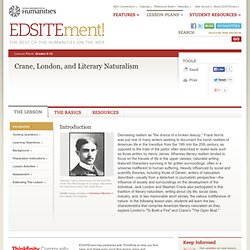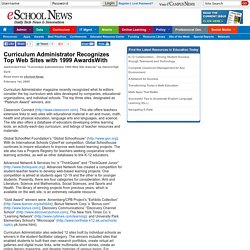

The “Secret Society” and Fitzgerald's The Great Gatsby. EDSITEment - Lesson Plan. Activity 1.

Historical Figures Research: Biography and Court Transcripts Having learned a little about the mindset of a seventeenth-century Puritan (see Preparing to Teach This Lesson for resources and ideas), students should choose one person from the following group of historical figures upon which to do research: Cotton MatherBridget BishopRev. Samuel ParrisJudge John HathorneTitubaAbigail WilliamsMercy LewisMary WarrenSarah GoodRebecca NurseJohn ProctorElizabeth ProctorMartha CoryGiles Cory Students will have in-class time to do Internet searches for their historical figure. For both the oral and written reports, biographical information may be found on any of the sites described in Preparing to Teach. Written Reports.
What was your historical figure's social and economic status in the Salem community? Oral Reports. Activity 2. As students read the 4 acts of The Crucible, they should keep a daily journal. Activity 3. Possibilities include: Activity 4. Activity 5. You're Accused! The Salem Witchcraft Trials of 1692. NY Times 1953 review. The Crucible. Our Courts - Homepage. Gilder Lehrman Institute's The Great Depression Site. EDSITEment - Lesson Plan - Naturalism. Activity 1.

Introduction to Literary Naturalism Share with students, or have them visit and read, literary critic Donna Campbell's review of Naturalism in American Literature, via the EDSITEment reviewed Internet Public Library. In particular, review with students Charles Child Walcutt's common themes of naturalism as noted in his American Literary Naturalism: A Divided Stream (cited at Donna Campbell's Literary Movements website).
As a summary, Walcutt notes the following themes in naturalism: The "brute within"—which is the notion that everyone has "strong and often warring emotions: passions, such as lust, greed, or the desire for dominance or pleasure," leading to behavior considered taboo by society. If you wish, use this interactive quiz to test their reading comprehension or understanding of these concepts. Finally, ask students to imagine how a character might look from a novel or short story written in the literary style of naturalism. Activity 2. Themes: Activity 3. EDSITEment - Lesson Plan - To Build a Fire. Activity 1.

Introducing London and Picturing the Scene Introduce your students to Jack London's biography and place him in literary history, using the biographies and other information available in the "Preparing to Teach" section. To give visual life to each story, ask students to explore the following images (you might consider breaking students up in groups depending on the number of computers available). Students have likely not read the stories yet, so you might have them read the first few paragraphs out loud to set the scene. Images relevant to London: From Jack London Collection (a link from University of Virginia's Center for Liberal Arts): Jack London in the Klondike From Digital Classroom: Over Chilkoot Pass From Links to the Past (National Park Service) Activity 2.
Curriculum - Letter-scanning project brings history to life. Timelines - Create a Timeline and Share - circaVie. Curriculum - Letter-scanning project brings history to life. Abstracted from "Curriculum Administrator 1999 Web Site Awards" by Odvard Egil DyrliRead more by eSchool News February 1st, 2000 Curriculum Administrator magazine recently recognized what its editors consider the top curriculum web sites developed by companies, educational organizations, and individual schools.

The top three sites, designated as “Platinum Award” winners, are: Classroom Connect ( This site offers teachers extensive links to web sites with educational material in art and music, math, health and physical education, language arts and languages, and science. The site also offers a database of educators developing online learning tools, an activity-each-day curriculum, and listings of teacher resources and materials. Global SchoolNet Foundation’s “Global Schoolhouse” ( With its International Schools CyberFair competition, Global Schoolhouse continues to inspire educators to improve web-based learning projects. Dead Poet's Society - Carpe Diem Video. Frederick Douglass Project. The Department of Rare Books and Special Collections and the Frederick Douglass Institute welcome you to the University of Rochester Frederick Douglass Project.

This project seeks to digitize all of the Frederick Douglass materials held in the collections of the University of Rochester Library. The work will be undertaken by undergraduates, that they may have a greater understanding of Douglass by working with the letters and newspapers he composed. Frederick Douglass spent 25 crucial years of activism in Rochester. The University's collections hold over 100 letters that date from before the Civil War, when Douglass was editor of The North Star, an anti-slavery newspaper which he published in Rochester, to a few years prior to his death in 1895. In addition, the collection also includes photographs of Douglass and copies of his newspapers. Currently available on the website are: General information about the project, including the editorial practices employed, is available here.